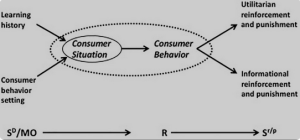Examining the American business sector through the lens of consumer behavior provides insights into how businesses understand, anticipate, and respond to the needs and preferences of American consumers. Consumer behavior is influenced by various factors, including cultural, social, psychological, and economic elements. The purpose of this analysis is to elaborate the American business sector through the lens of consumer behavior.

The American Business Sector Through The Lens Of Consumer Behavior
-
Table of Contents
ToggleDiversity of Consumer Preferences:
- Cultural Diversity: The United States is culturally diverse, with consumers representing various ethnicities, backgrounds, and lifestyles. Businesses must recognize and respond to this diversity by offering products and services that resonate with different consumer segments.
-
E-commerce and Digital Transformation:
- Online Shopping Trends: The American business sector has witnessed a significant shift towards e-commerce, with consumers increasingly preferring online shopping. Businesses need to adapt to digital trends, enhance online platforms, and provide seamless digital experiences.
-
Brand Loyalty and Trust:
- Building Trust: American consumers value trust and authenticity. Businesses that establish and maintain transparent communication, ethical practices, and quality products can build strong brand loyalty.
-
Sustainability and Social Responsibility:
- Environmental Concerns: Consumer behavior in the U.S. reflects a growing awareness of environmental issues. Businesses incorporating sustainable practices and social responsibility initiatives may attract environmentally-conscious consumers.
-
Influence of Social Media:
- Social Media Impact: Social media plays a crucial role in shaping consumer opinions and behaviors. Businesses engage in social media marketing to connect with consumers, build brand awareness, and leverage influencer collaborations.
-
Consumer Empowerment:
- Informed Decision-Making: American consumers are well-informed and empowered. They conduct research, read reviews, and seek information before making purchasing decisions. Businesses need to provide accessible information to support informed choices.
-
Personalization and Customization:
- Tailored Experiences: Consumers appreciate personalized experiences. Businesses use data analytics and technology to tailor products, services, and marketing messages to individual preferences.
-
Changing Demographics:
- Aging Population: With an aging population, businesses must consider the preferences and needs of older consumers. This includes product design, marketing strategies, and customer service considerations.
-
Innovation and Technology Adoption:
- Tech-Savvy Consumers: American consumers are early adopters of technology. Businesses that innovate and integrate technology into their offerings, such as mobile apps and smart devices, can appeal to tech-savvy consumers.
-
Price Sensitivity:
- Value for Money: Consumers in the U.S. often seek value for money. Businesses must balance pricing strategies with perceived product or service quality to meet consumer expectations.
-
Health and Wellness Trends:
- Healthy Lifestyles: Health and wellness have become priorities for many American consumers. Businesses in the food, fitness, and wellness industries can capitalize on these trends by offering healthier options and promoting well-being.
-
Convenience and Time-Saving Solutions:
- On-the-Go Lifestyle: Consumers appreciate convenience and time-saving solutions. Businesses that offer efficient services, fast delivery, and easy-to-use products align with the on-the-go lifestyle of many Americans.
-
Impact of Economic Factors:
- Economic Stability: Economic conditions influence consumer spending. Businesses monitor economic indicators to understand how external factors may impact consumer confidence and purchasing power.
-
Cultural Shifts and Trends:
- Cultural Influences: Cultural shifts, such as changing norms and values, impact consumer preferences. Businesses that stay attuned to cultural trends can adjust their strategies to remain relevant.
-
Post-Pandemic Consumer Behavior:
- Adapting to Changes: The COVID-19 pandemic has influenced consumer behavior, with increased reliance on online shopping, remote work, and a focus on health and safety. Businesses must adapt to these changes in the post-pandemic landscape.
In summary, understanding consumer behavior is vital for businesses operating in the American market. Successful businesses not only respond to current trends but also anticipate and adapt to evolving consumer preferences, creating a dynamic and consumer-centric approach to their strategies.
